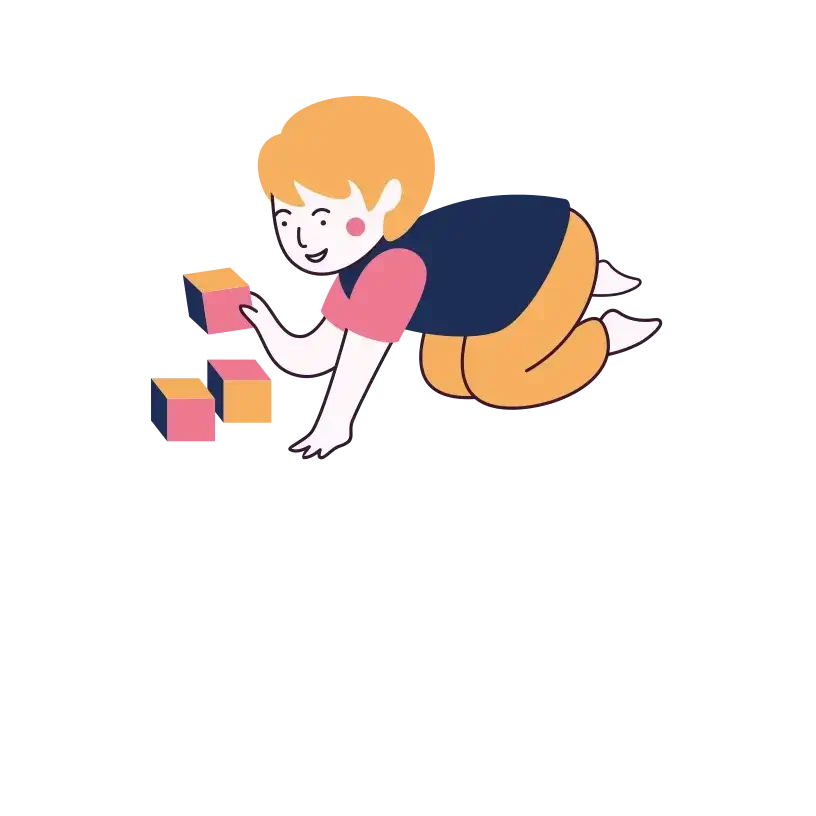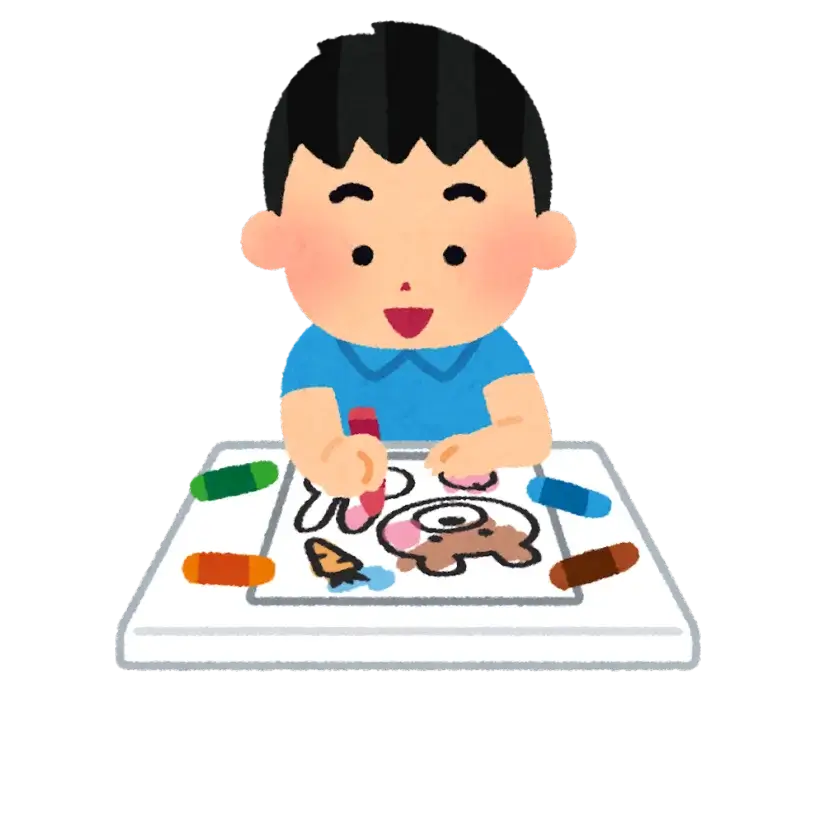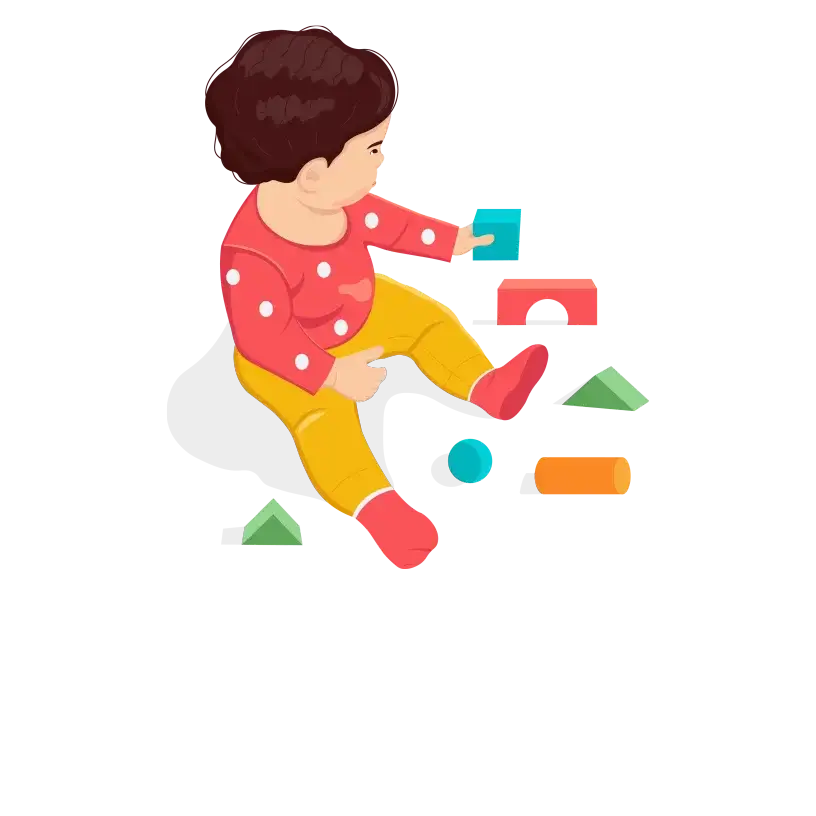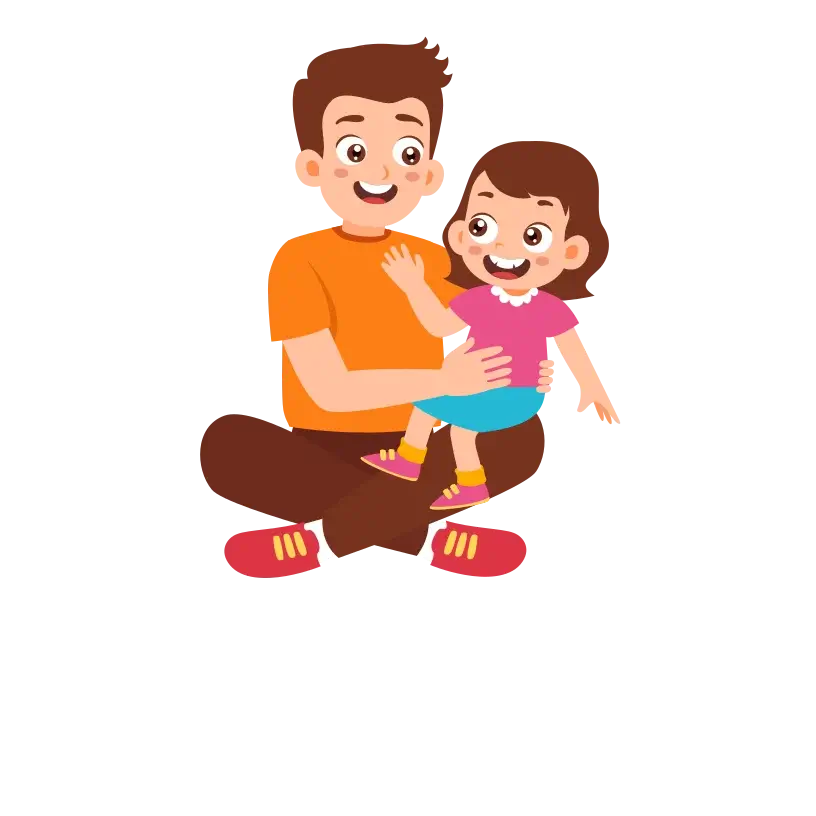Menu

Now that your little one is officially one-and-a-half-year-old, they are entering the bustling world of toddlerhood! Their newfound independence and opinions might surprise you as they start running, climbing, and asserting their preferences.
While temper tantrums can be challenging, remember they’re just trying to navigate their emotions and surroundings. Keep nurturing their growing communication skills, and soon, they’ll be able to express themselves more clearly. It’s an exciting time of exploration and discovery for both of you!
At 18 months, your child is a whirlwind of activity and curiosity! They’re absorbing information like a sponge, eager to explore and understand the world around them. Every day brings new discoveries and challenges as they navigate their environment and mimic your actions and words.
This stage is crucial for instilling values and teaching lessons about kindness, empathy, and respect. By modelling positive behaviours and providing gentle guidance, you can help shape their understanding of right and wrong and foster a strong moral compass. Embrace this exciting time of growth and learning, and enjoy witnessing your child’s boundless enthusiasm for discovering the world!
According to the World Health Organization, the average weight of an 18-month-old is 23.4 pounds for girls and 24.1 pounds for boys. The average height of an 18-month-old is 31.8 inches for girls and 32.4 inches for boys.
This growth spurt reflects their active exploration and increasing independence as they navigate the world around them. Encourage their curiosity and support their physical development with plenty of opportunities for play and exploration in a safe environment.
Enjoy watching them reach new milestones and grow into their unique personalities!
Your 18-month-old, eager for independence, may display challenging and unusual behaviours. Tap below for guidance on handling
Temper Tantrums: Even as your toddler’s language skills improve, they may still face challenges expressing themselves fully, sometimes leading to tantrums. To help manage these situations, keep stressful outings short, like trips to the mall, and ensure your child is well-rested and fed beforehand.
Separation Anxiety: It’s common to sneak away without saying goodbye when the sitter arrives, but avoid leaving your child uncertain is important. Always acknowledge your departure and reassure them that you’ll be back. To ease the transition, engage them in an activity before you leave, and keep goodbyes brief yet cheerful and firm.
This helps your 18-month-old feel secure and understand that you’ll return, fostering trust and confidence in your relationship.
Sharing: Toddlers typically prefer to keep things for themselves rather than share with others, which is a natural behaviour. Instead of expecting immediate sharing, you can gradually teach your child this skill. For example, you can give your child two pieces of food and encourage them to share one with another child.
Your child must always have one item for themselves before being asked to share it with someone else.
At 18 months, your child is transitioning from baby food to more solid foods and drinking whole milk instead of breast milk or formula. Many toddlers can now drink from a regular cup, and about half can use a straw cup. It’s important to avoid using bottles at this age, as they should typically be phased out by 18-month-old.
By 18 months old, your child should have three meals and two snacks throughout the day. Most paediatricians suggest toddlers consume around 1,000 calories daily, approximately 40 calories for each inch of their height.
It’s typical for toddlers to experience fluctuating appetites daily, which is normal as they learn to self-regulate their food intake. Remember that serving sizes for toddlers are typically about one-fourth the size of adult portions.
If you are just weaning your 18-month-old off breastfeeding, take it slow to ensure a smooth transition. Gradually reduce one nursing session every three to seven days before eliminating the next one. Rapid weaning can lead to plugged milk ducts and infections, so patience is key.
Additionally, this transition may affect your child emotionally, so offering extra comfort and reassurance during this time is important.
Picking eating is common during toddlerhood, so don’t be overly concerned if your child rejects nutritious foods or eats very little at meals. Their growth rate has slowed compared to their first year, and asserting independence by saying “no” to food is part of their developmental journey.
The key is to continue offering a variety of nutritious foods, involving your child in choosing and preparing meals, and modelling healthy eating habits.
By 18 months, your child still needs around 11 to 14 hours of sleep daily. They may have transitioned to just one nap, which could prompt adjustments in your daily routine. Usually, the morning nap is dropped, and either the afternoon nap becomes longer, or the bedtime shifts slightly earlier. Fortunately, this transition tends to happen naturally as your child grows.
Regression in sleep patterns, where a child who was previously a good sleeper begins waking more frequently, can be unsettling for parents. Factors like teething, illness, or changes in routine such as travelling or holidays can disrupt sleep. To address the issue, it’s crucial to identify the root cause so you can implement the appropriate solution.
Maintaining the usual bedtime routine and setting consistent limits can help your child return to regular sleeping patterns. By providing a familiar and comforting environment, you can support your child in navigating through the sleep regression phase more smoothly.

Between the ages of 1 and 2, your baby’s visual abilities undergo significant development. They become more adept at perceiving details and depth, essential for navigating their environment effectively.
By 18 months, their vision is quite well-developed, allowing them to notice subtle nuances in their surroundings. As a parent, you can support this development by providing various visually stimulating experiences, such as colourful books, engaging toys, and outings to different places where they can encounter new sights and scenes.

Throughout the toddler years, language comprehension continues to advance rapidly. By around 18 months, toddlers can understand simple commands and recognize the names of familiar objects and people in their environment.
While their spoken vocabulary may still be limited, they communicate effectively through nonverbal means and enjoy engaging with auditory stimuli like music, stories, and conversations. Encouraging interactive and auditory-rich experiences can further enhance their language development and cognitive skills.
As toddlers grow, their taste preferences and sensitivity to smells evolve. They begin to express preferences for certain flavours and may exhibit aversions to others. It’s common for toddlers to reject new foods initially, but repeated exposure can gradually increase acceptance.
You can support this by offering diverse foods and encouraging descriptive discussions about tastes and smells during meals. This helps expand their palate and fosters language development and sensory awareness.

Toddlers’ tactile exploration plays a crucial role in their cognitive and physical development. They use their hands to explore their environment, manipulate objects, and interact with people and surroundings.
While they may engage in hitting behaviours as a form of expression, teaching them appropriate ways to communicate and manage frustration is essential. Providing a safe and stimulating environment for tactile exploration, coupled with gentle guidance and positive reinforcement, helps toddlers develop fine motor skills, emotional regulation, and social skills.

Between the ages of 1 and 2, your baby’s visual abilities undergo significant development. They become more adept at perceiving details and depth, essential for navigating their environment effectively.
By 18 months, their vision is quite well-developed, allowing them to notice subtle nuances in their surroundings. As a parent, you can support this development by providing various visually stimulating experiences, such as colourful books, engaging toys, and outings to different places where they can encounter new sights and scenes.

Throughout the toddler years, language comprehension continues to advance rapidly. By around 18 months, toddlers can understand simple commands and recognize the names of familiar objects and people in their environment.
While their spoken vocabulary may still be limited, they communicate effectively through nonverbal means and enjoy engaging with auditory stimuli like music, stories, and conversations. Encouraging interactive and auditory-rich experiences can further enhance their language development and cognitive skills.
As toddlers grow, their taste preferences and sensitivity to smells evolve. They begin to express preferences for certain flavours and may exhibit aversions to others. It’s common for toddlers to reject new foods initially, but repeated exposure can gradually increase acceptance.
You can support this by offering diverse foods and encouraging descriptive discussions about tastes and smells during meals. This helps expand their palate and fosters language development and sensory awareness.

Toddlers’ tactile exploration plays a crucial role in their cognitive and physical development. They use their hands to explore their environment, manipulate objects, and interact with people and surroundings.
While they may engage in hitting behaviours as a form of expression, teaching them appropriate ways to communicate and manage frustration is essential. Providing a safe and stimulating environment for tactile exploration, coupled with gentle guidance and positive reinforcement, helps toddlers develop fine motor skills, emotional regulation, and social skills.
Observing these detailed signs of discomfort, you can better understand your child’s needs and provide appropriate care and support. If you’re unsure about the cause of your child’s discomfort or if symptoms persist or worsen, don’t hesitate to seek guidance from your paediatrician.

At this age, your child can begin to understand basic concepts like matching similar objects. For example, they may be able to match a shoe with its pair or match colours or shapes.

Your child is starting to explore their creativity and fine motor skills by scribbling with crayons or markers. This activity helps develop hand-eye coordination and strengthens their hand muscles.

Your child is becoming more imaginative and enjoys playing with toys, such as dolls, cars, or blocks. They may play pretend, such as feeding a doll or pretending to drive a toy car.

Your child is becoming more independent in feeding themselves. They can drink from a cup with minimal spillage and may learn to use a spoon to feed themselves, although they may still need assistance.

By 18 months old, most children have around ten teeth, although the exact number can vary. These teeth help them chew more solid foods and explore various textures.

Temper tantrums are a common expression of frustration or anger at this age. Your child may throw themselves on the floor, scream, or cry when they don’t get their way or feel overwhelmed by emotions.

Your child is learning to communicate their preferences and opinions by shaking their head from side to side to indicate “no.” This is an early form of language development and helps them express themselves.

Your child is attached to familiar caregivers and may show affection through hugs, kisses, or cuddles. They feel secure and comfortable expressing their love for those they trust and feel close to.

At this age, your child can begin to understand basic concepts like matching similar objects. For example, they may be able to match a shoe with its pair or match colours or shapes.

Your child is starting to explore their creativity and fine motor skills by scribbling with crayons or markers. This activity helps develop hand-eye coordination and strengthens their hand muscles.

Your child is becoming more independent in feeding themselves. They can drink from a cup with minimal spillage and may learn to use a spoon to feed themselves, although they may still need assistance.

Your child is becoming more independent in feeding themselves. They can drink from a cup with minimal spillage and may learn to use a spoon to feed themselves, although they may still need assistance.

By 18 months old, most children have around ten teeth, although the exact number can vary. These teeth help them chew more solid foods and explore various textures.

Temper tantrums are a common expression of frustration or anger at this age. Your child may throw themselves on the floor, scream, or cry when they don’t get their way or feel overwhelmed by emotions.

Your child is learning to communicate their preferences and opinions by shaking their head from side to side to indicate “no.” This is an early form of language development and helps them express themselves.

Your child is attached to familiar caregivers and may show affection through hugs, kisses, or cuddles. They feel secure and comfortable expressing their love for those they trust and feel close to.
If you observe any of these concerning signs in your child’s development, it’s crucial to seek professional evaluation and support from healthcare providers or developmental specialists. Early intervention can play a pivotal role in addressing potential developmental delays or issues.
By recognizing these red flags and taking proactive steps to address them, parents can help ensure their child receives the necessary support to thrive and reach their full potential.
Disciplining an 18-month-old requires gentle yet firm approaches. Effective strategies include redirecting their attention, using simple language, and offering positive reinforcement for good behaviour. Consistency in enforcing boundaries and consequences, setting clear limits, and modelling desired behaviour help establish a foundation for understanding expectations.
It’s generally recommended that children aged 6 months to 5 years take daily vitamin supplements containing vitamins A, C, and D. However, it’s essential to consult with your paediatrician or healthcare provider to determine if vitamin supplements are appropriate for your 18-month-old based on their individual needs and dietary intake. If your child is consuming a balanced diet with adequate vitamin intake, they may not need additional supplements.
You may be surprised when your typically affectionate child is frustrated by biting or hitting others. While tantrums are common at this stage, teaching them that harming others is never acceptable is crucial. Children at this age understand “no” and can sense disapproval in their tone.
If your child bites someone, firmly say, “No! You should not bite.” Offering too much attention in response to biting can inadvertently reinforce the behaviour. Instead, focus on comforting the bitten child, offering hugs and ensuring their well-being.
At 18 months, it’s common for toddlers to display impulsivity, hyperactivity, and difficulty focusing, leading some parents to think of ADHD (attention deficit hyperactivity disorder). However, it’s too early to make a diagnosis at this stage.
Many children exhibit these behaviours at this age, and most often, they outgrow them. Only if these behaviours persist into later childhood might it suggest a more serious concern like ADHD. While it’s important to discuss any concerns with your doctor, a formal evaluation for ADHD typically occurs when the child is in a school setting.
At 18 months old, climbing becomes an exciting adventure for many toddlers, and it’s no surprise they may attempt to climb out of their crib. While some parents successfully thwart their little escape artists, others struggle to prevent them from climbing out. When it becomes apparent that your child is not staying safely in the crib, the risk of injury from falling while climbing outweighs the risk of rolling off a low bed.
It’s advisable to convert the crib into a toddler bed or bring in a big kid bed with safety rails. Alternatively, some parents place the crib mattress directly on the floor to minimise the risk of falls.
Disciplining an 18-month-old requires gentle yet firm approaches. Effective strategies include redirecting their attention, using simple language, and offering positive reinforcement for good behaviour. Consistency in enforcing boundaries and consequences, setting clear limits, and modelling desired behaviour help establish a foundation for understanding expectations.
It’s generally recommended that children aged 6 months to 5 years take daily vitamin supplements containing vitamins A, C, and D. However, it’s essential to consult with your paediatrician or healthcare provider to determine if vitamin supplements are appropriate for your 18-month-old based on their individual needs and dietary intake. If your child is consuming a balanced diet with adequate vitamin intake, they may not need additional supplements.
You may be surprised when your typically affectionate child is frustrated by biting or hitting others. While tantrums are common at this stage, teaching them that harming others is never acceptable is crucial. Children at this age understand “no” and can sense disapproval in their tone.
If your child bites someone, firmly say, “No! You should not bite.” Offering too much attention in response to biting can inadvertently reinforce the behaviour. Instead, focus on comforting the bitten child, offering hugs and ensuring their well-being.
At 18 months, it’s common for toddlers to display impulsivity, hyperactivity, and difficulty focusing, leading some parents to think of ADHD (attention deficit hyperactivity disorder). However, it’s too early to make a diagnosis at this stage.
Many children exhibit these behaviours at this age, and most often, they outgrow them. Only if these behaviours persist into later childhood might it suggest a more serious concern like ADHD. While it’s important to discuss any concerns with your doctor, a formal evaluation for ADHD typically occurs when the child is in a school setting.
At 18 months old, climbing becomes an exciting adventure for many toddlers, and it’s no surprise they may attempt to climb out of their crib. While some parents successfully thwart their little escape artists, others struggle to prevent them from climbing out. When it becomes apparent that your child is not staying safely in the crib, the risk of injury from falling while climbing outweighs the risk of rolling off a low bed.
It’s advisable to convert the crib into a toddler bed or bring in a big kid bed with safety rails. Alternatively, some parents place the crib mattress directly on the floor to minimise the risk of falls.
1. Center for Disease Control and Prevention: Birth to 24 months: Boys: Length-for-age and Weight-for-age percentiles
2. Center for Disease Control and Prevention: Birth to 24 months: Girls: Length-for-age and Weight-for-age percentiles
3. Cleveland Clinic: Vitamins for kids: Do children really need supplements?
4.Children Minnesota: The Senses and Your 1-to 2-Year-Old
5. HealthyChildren: Diagnosing ADHD in Children: Guidelines & Information for Parents
6. Healthy Children: Serving Sizes for Toddlers
7. La Leche League GB: When Breastfeeding Suddenly Ends
8. Mayo Clinic: Infant and Toddler Health
9. NHS: Child Development Milestones
10. NHS: Vitamins for Children
11. RockCastle Regional Hospital Respiratory Care Center: Croup
12. RockCastle Regional Hospital Respiratory Care Center: Common Childhood Illnesses
13. Sleep Foundation: How Much Sleep do Babies and Kids Need?
14. Sleep Foundation: 18-month sleep regression
© Mindsmaking 2024